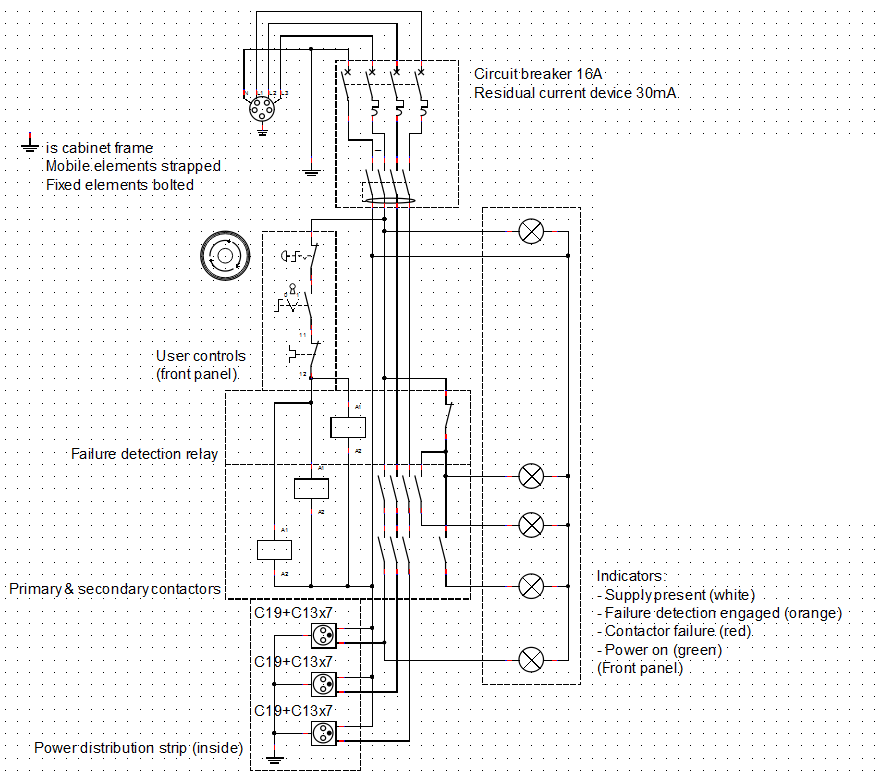Quick question: are normally-open contactors (which I assume are simply high breaking capacity relays) virtually safe from failing closed?
I want to cut off a 400V 3-phase supply using an emergency stop, and I have 2 options:
- Use a 3-pole emergency stop, and wire the three phases to that button. I don't like the idea of 400V being so close to the user's hands.
- Wire the contacts of a 3-pole normally-open contactor on the supply line, and wire the emergency stop on the 230V coil.
Three phase is used for heating, not for a giant chainsaw, but the emergency button should still do its job should it be pressed. So is option 2 commonly accepted, and safe enough for an end product? Any norms stating this on which I could rely?
Edit implementing the answer
I am quite keen on the idea of forcing the user to fix a failure in the redundant system, but I'm trying to limit the number of components as well. Is this a good comromise? I found this contactor, which has 1NC and 1NO auxiliary contacts that we can use.
Since the current in the coils is already very small compared to the switches capability, I made them single pole, if that is acceptable.

In particular, I'm not sure whether there is a possibility that the auxiliary contacts do not follow the main contacts (meaning the main contacts may fail closed or welded without the auxiliary contacts staying open when normally closed), could you confirm?


